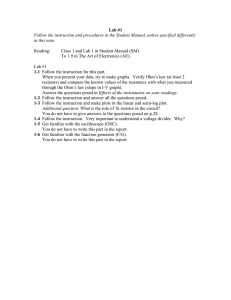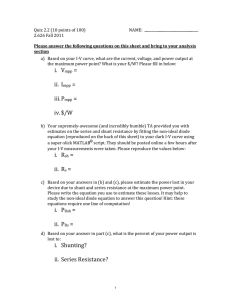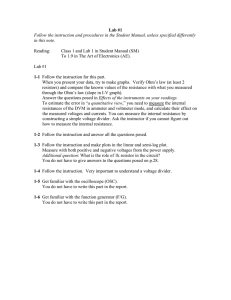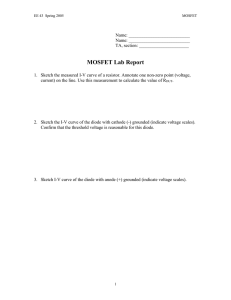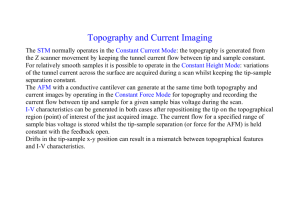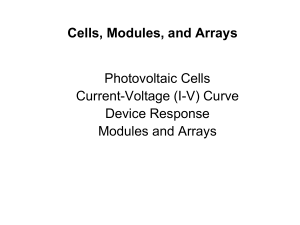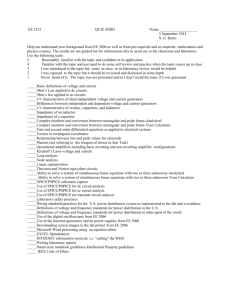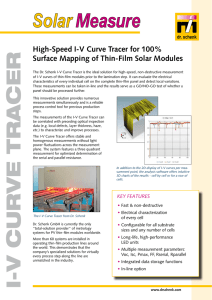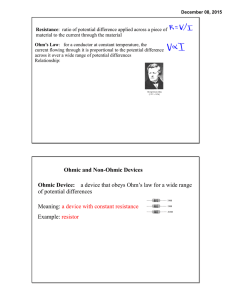Lab 2: DC Circuits Reading Assignment
advertisement
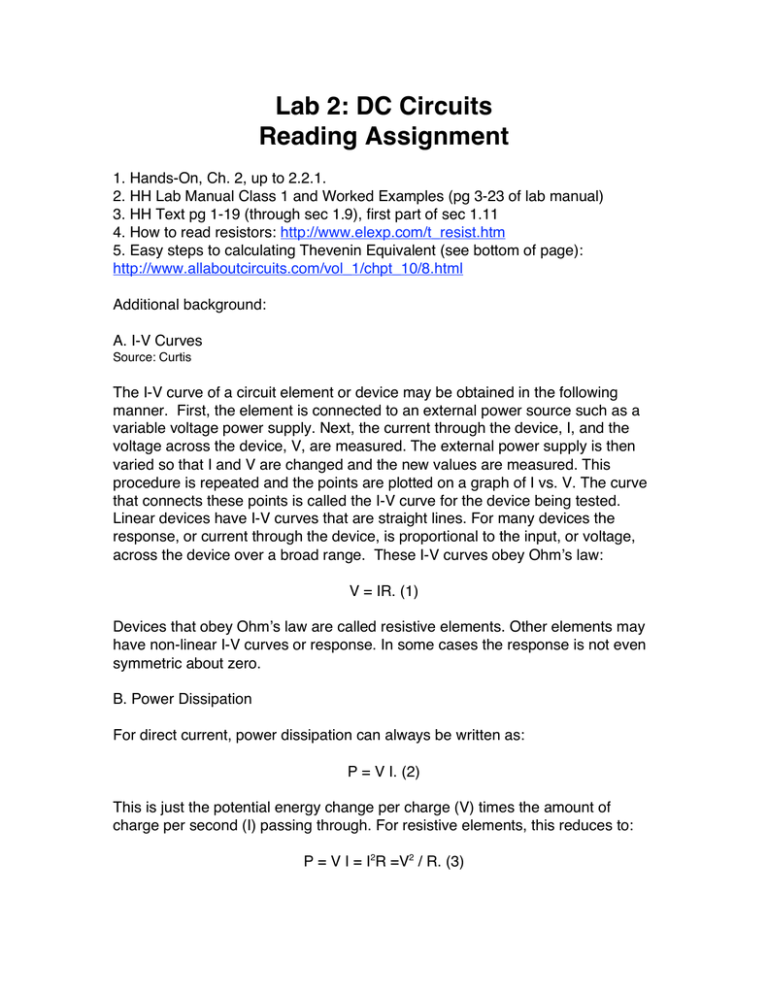
Lab 2: DC Circuits Reading Assignment 1. Hands-On, Ch. 2, up to 2.2.1. 2. HH Lab Manual Class 1 and Worked Examples (pg 3-23 of lab manual) 3. HH Text pg 1-19 (through sec 1.9), first part of sec 1.11 4. How to read resistors: http://www.elexp.com/t_resist.htm 5. Easy steps to calculating Thevenin Equivalent (see bottom of page): http://www.allaboutcircuits.com/vol_1/chpt_10/8.html Additional background: A. I-V Curves Source: Curtis The I-V curve of a circuit element or device may be obtained in the following manner. First, the element is connected to an external power source such as a variable voltage power supply. Next, the current through the device, I, and the voltage across the device, V, are measured. The external power supply is then varied so that I and V are changed and the new values are measured. This procedure is repeated and the points are plotted on a graph of I vs. V. The curve that connects these points is called the I-V curve for the device being tested. Linear devices have I-V curves that are straight lines. For many devices the response, or current through the device, is proportional to the input, or voltage, across the device over a broad range. These I-V curves obey Ohm’s law: V = IR. (1) Devices that obey Ohm’s law are called resistive elements. Other elements may have non-linear I-V curves or response. In some cases the response is not even symmetric about zero. B. Power Dissipation For direct current, power dissipation can always be written as: P = V I. (2) This is just the potential energy change per charge (V) times the amount of charge per second (I) passing through. For resistive elements, this reduces to: P = V I = I2R =V2 / R. (3) Either of these forms can be used for resistors. For non-linear devices, you must use (2).
